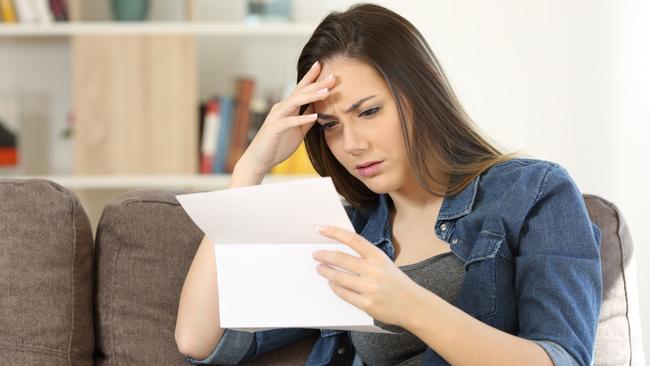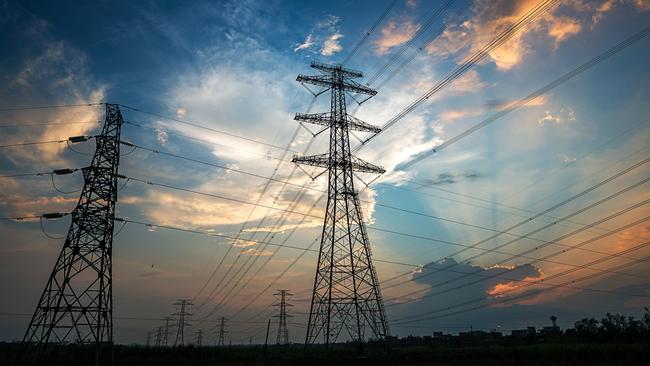State and federal green energy schemes to contribute $330m to Victorians’ home power bills
Wholesale power price rises and government green energy subsidies will both contribute to looming sky-high power bills, government documents reveal.
News
Don't miss out on the headlines from News. Followed categories will be added to My News.
State and federal green energy schemes will contribute $330m to Victorians’ home power bills in the coming year, government documents reveal.
Figures compiled by the Essential Services Commission as part of its “default offer” – a safety net power deal for customers who do not shop around themselves – forecast the average household power bill to rise $352 to $1755 in the 2023-24 financial year.
The ESC expects state and commonwealth green energy initiatives will contribute $132 to the cost of each household’s bill, down from $138 last year.
The $330m is split across the state’s 2.5m households.
The figure includes the Victorian Energy Upgrades program, federal renewable energy targets and the minimum rate retailers must pay customers who contribute to the grid through solar rooftops.
The Australian Industry Group’s director of climate change and energy, Tennant Reed, said the VEU, which forces retailers to buy carbon credits created from installing energy-efficient light bulbs and heaters, would grow.
“I would not be surprised if the cost side of that does increase as the amount of energy to be saved goes up and the activities it supports gets more elaborate, including bigger upgrades than just changing light bulbs,” Mr Reed said.
“That scheme has a cost in what retailers pay and pass on, but it has benefits as well by reducing the bills of people with improved appliances.”
By far the biggest contributor to the forecast increase in Victorians’ power bills is a rise in the wholesale cost of energy.
ESC data shows wholesale energy costs contributed $340 to the average annual household power full in 2022-23.
But in 2023-24, wholesale energy costs will contribute $636 to the average annual bill.
This amounts to Victoria’s 2.5m households forking out an extra $740m as a result of increases to wholesale prices.
The cost of electricity production at coal-fired power stations has risen dramatically in the past 18 months as a result of breakdowns and a supply crunch caused, in part, by the war in Ukraine.
The federal government intervened last year into the energy crisis by imposing a cap on market prices of coal and gas, but this is not expected to filter through to bills for another year.
Mr Reed said he expected these price pressures to moderate but were unlikely to come down quickly.
“Wholesale prices over the next few years are far lower than they looked a year ago but that means they are still way higher than they were 18 months ago,” he said.
“We will be experiencing the hangover for a couple of years.
“It will be a reduction in pain rather than a return to good times.”
POWER BLOW: ENERGY BILLS SET TO RISE
More than one million Victorian households will be hit with power bill increases of up to $361 a year.
The 25 per cent rise in power prices for Origin Energy and AGL residential customers is set to kick in from August.
But in a sign that the cost of living squeeze is biting hard, the state’s two largest electricity retailers have revealed they will freeze prices or provide bill credits for battling customers on financial hardship schemes – shielding them from the carnage.
One leading social services group has now called for other major providers to follow suit and provide extra assistance for those in need.

The Saturday Herald Sun can reveal Origin Energy and AGL are the first two providers to release new market deals since regulated price increases were approved last month, with both companies saying it will mean an extra $341 for an average AGL household bill and $361 for Origin customers on market pricing deals.
Victoria’s average “default offer”, a safety net price for people who do not shop around, will also rise by $352 on July 1. Small businesses face a similar percentage hit, which will cost an average $590 next financial year.
Origin, which supplies electricity to almost 500,000 customers in Victoria, said a range of factors had influenced the decision, including what was happening in the wider energy market.
In 2022, outages at coal-fired power stations and soaring coal and gas prices sparked an energy cost crisis that forced the market operator to introduce a price cap.
But generators were entitled to compensation for the caps and the costs from the saga, including high contract prices for generation, are now being passed on to households.

But head of retail, John Briskin, said the company would wipe up to $45m in national revenue by freezing prices at 2022 rates for households on hardship programs.
“Increasing prices is never a decision we take lightly, especially at a time many people are struggling with higher cost of living,” he said. “We are protecting customers in our Power On hardship program by shielding them from these price changes so that they won’t be impacted.”
A spokeswoman for AGL, which is the state’s biggest retailer, said it would also help vulnerable families with $70m in
customer support over the next two years.
This includes providing those in their Staying Connected hardship program with up to $400 in bill credits in winter to manage price hikes.
About 85 per cent of Victorian households have market contracts for electricity, which will start to increase from August 1, or when existing contracts expire.
The new hikes come amid soaring gas prices, which could add several hundreds of dollars to bills for larger households this winter.
St Vincent de Paul Society policy manager Gavin Dufty said support for people facing energy hardship was welcomed and “we encourage all retailers to do the same”.
“Anyone who is financially struggling with their energy bills should call their retailer immediately and ask for assistance,” he said.
Mr Dufty said people should “shop around” when coming off contracts, and be mindful that price hikes did not hit straight away for many families.
The new cost of living blow follows a series of recent interest rate rises from the Reserve Bank that have added hundreds of dollars a month to average mortgage repayments, and amid soaring grocery, rent, and petrol prices.




